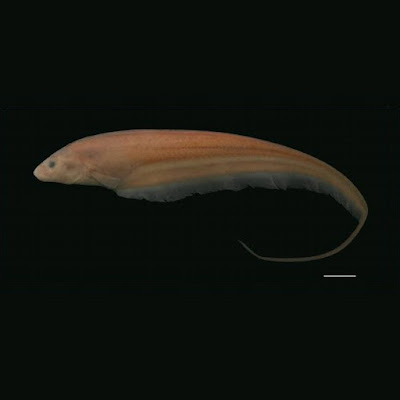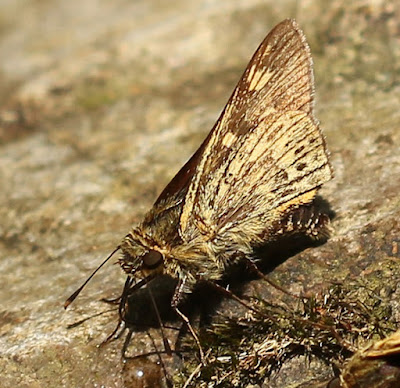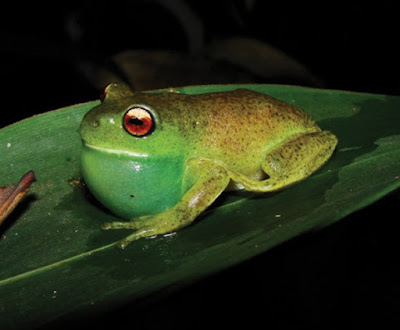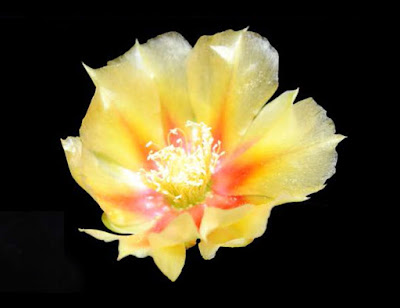[Most Recent Entries] [Calendar View]
Wednesday, January 4th, 2017
| Time | Event | ||||
| 3:31a | [Ichthyology • 2016] Eigenmannia correntes • A New Species of Eigenmannia Jordan and Evermann (Gymnotiformes: Sternopygidae) from the upper rio Paraguai basin, Brazil
Abstract Eigenmannia correntes, a new species belonging to the Eigenmannia trilineata species-group, is described from tributaries of rio Correntes, a major affluent of the rio Piquiri system, upper rio Paraguai basin (Mato Grosso and Mato Grosso do Sul states, Brazil). Eigenmannia correntes is included in the currently poorly defined sternopygid genus Eigenmannia (Ostariophysi: Gymnotiformes) by presenting characters that are either primitive or of uncertain polarity, such as eyes covered by skin, scales present over entire postcranial portion of body, teeth absent from oral valve, infraorbital bones 1+2 with enlarged posterodorsal expansion, and gill rakers short and unossified. The new species is distinguished from all congeners, except those species included in the Eigenmannia trilineata species-group, by the presence of a conspicuous superior midlateral stripe (synapomorphy of this clade). Eigenmannia correntes can be differentiated from all members of the Eigenmannia trilineata species-group, except E. vicentespelaea, E. waiwai and E. besouro, by its subterminal mouth (vs. terminal in remaining species of that group). Further, it differs from these aforementioned species by a number of meristic and morphometric characters, including number of premaxillary and dentary teeth, number of longitudinal series of scales above lateral line, number of pectoral-fin and anal-fin rays, eye diameter, postorbital distance, and snout length. Finally, notes on reproduction and parasitism for E. correntes are presented. Keywords: Pisces, Eigenmannia trilineata, Eigenmanninae, glass knifefish, Systematics, taxonomy  Etymology. The specific epithet correntes refers to the rio Correntes, the main river at the rio Piquiri system, upper rio Paraguai basin, from where all specimens used in the original description were collected. A noun in apposition. Ricardo Campos-Da-Paz and Igor Raposo Queiroz. 2017. A New Species of Eigenmannia Jordan and Evermann (Gymnotiformes: Sternopygidae) from the upper rio Paraguai basin. Zootaxa. 4216(1); 073–084. DOI: 10.11646/zootaxa.4216.1.5 | ||||
| 4:22a | [Entomology • 2016] Onryza pesudomaga • A New Species of Onryza Watson, 1893 (Lepidoptera: Hesperiidae) from south China
Abstract A new species, Onryza pesudomaga is described from Zhejiang Province, S. China. The new taxon resembles O. maga which is widely distributed in S. China and Taiwan. Differences and some biological information of the two allied species are given. A key to species of the genus Onryza Watson, 1893 and a distribution map of all the members of this genus are provided. Keywords: Lepidoptera, skipper, Zhejiang, taxonomy, Onryza pesudomaga, Onryza maga
Jian-Qing Zhu, Wei-Wei Mao and Zhi-Bing Chen. 2016. A New Species of Onryza Watson, 1893 (Lepidoptera: Hesperiidae) from China. Zootaxa. 4216(1); DOI: 10.11646/zootaxa.4216.1.7 | ||||
| 7:02a | [Herpetology • 2017] Aplastodiscus lutzorum • The First Species of Aplastodiscus (Anura, Hylidae) endemic to the Brazilian Cerrado
Abstract The genus Aplastodiscus includes 14 nominal species in four monophyletic groups with occurrence in the Atlantic Forest and Brazilian Cerrado (Brazilian Savanna) of South America. A recent study reviewed the taxonomy and phylogenetic relationships of the genus and suggested a third species for the A. perviridis Group. Herein, on the basis of morphology and advertisement call, we describe this species and test its monophyly. The new species is the only Aplastodiscus with endemic occurrence in the Cerrado Biome. In addition, its geographical distribution and conservation status are discussed. Keywords: Aplastodiscus lutzorum sp. n., Cophomantinae, new species, integrative taxonomy Bianca V.M. Berneck, Ariovaldo A. Giaretta, Reuber A. Brandão, Carlos A. G. Cruz and Celio F.B. Haddad. 2016. The First Species of Aplastodiscus endemic to the Brazilian Cerrado (Anura, Hylidae). ZooKeys. 642: 115-130. DOI: 10.3897/zookeys.642.10401  | ||||
| 11:09a | [Botany • 2017] Taxonomic Revision of the Opuntia humifusa complex (Opuntieae: Cactaceae) of the eastern United States Abstract The Humifusa clade represents a recent radiation that originated in the late Pliocene or early Pleistocene and consists of about 10 species widely distributed in North America from northern Mexico north to Ontario, Canada, and south to the Florida Keys. This clade likely originated in the edaphically subxeric regions of northern Mexico and the southwestern United States, and from there it later spread to the southeastern United States and ultimately produced a small radiation in the eastern United States. Hybridization among evolutionarily divergent diploid species of the southeastern (SE) and southwestern (SW) United States subclades led to the origin of many polyploid taxa, which today occupy about 75% of the distribution of the clade. Here we present a taxonomic revision of the SE subclade of the Humifusa clade and polyploid derivatives that commonly occur in the eastern United States (i.e., the O. humifusa complex). We recognize eight taxa: Opuntia abjecta, O. austrina, O. cespitosa, O. drummondii, O. humifusa, O. mesacantha subsp. mesacantha, O. mesacantha subsp. lata, and O. nemoralis, as well as the interclade allopolyploid, Opuntia ochrocentra, derived, in part, from a member of the O. humifusa complex. Diagnostic keys, descriptions, original photos, and distribution maps are provided for each taxon. Neotypes are designated for the names O. austrina (NY) and O. youngii (USF), and O. drummondii and O. tracyi are lectotypified from an illustration in Maund & Henslow and a specimen at NY, respectively. Keywords: cacti, hybridization, morphology, polyploidy, prickly pears, taxonomy, Eudicots 1. Opuntia abjecta Small ex Britton & Rose (1923: 257) (Fig. 4). Type:— UNITED STATES. Florida. ... 2. Opuntia ochrocentra Small ex Britton & Rose (1923: 262) (Fig. 6). Type:— UNITED STATES. Florida. ... 3. Opuntia austrina Small (1903: 816) ≡ Opuntia compressa (Salisbury 1796: 348) Macbride (1922: 41) var. austrina (Small) Benson (1969: 125) ≡ Opuntia humifusa (Rafinesque 1820: 15) Rafinesque (1830: 2) var. austrina (Small) Dress (1975: 164) (Figs. 7–8). Neotype (designated here):—UNITED STATES. Florida. ...4. Opuntia cespitosa Rafinesque (1830: 216) (Fig. 9). Neotype (designated by Majure 2014):—UNITED STATES. Kentucky. ... 5. Opuntia drummondii Graham in Maund & Henslow (1846: 246) (Fig. 10). Lectotype (designated here):—.... 6. Opuntia humifusa (Raf.) Rafinesque (1830: 247) ≡ Cactus humifusus Raf. Annals Nat. 15. 1820. Neotype (designated by Leuenberger 1993: 426):—UNITED STATES. Pennsylvania. ...7. Opuntia mesacantha Rafinesque (1830: 216) (Figs. 13,15). Neotype (designated by Majure 2014: 1):—UNITED STATES. Virginia. ... 7a. Opuntia mesacantha subsp. mesacantha (Fig. 12) 7b. Opuntia mesacantha subsp. lata (Small) Majure, Phytoneuron 106: 1. 2014 (Fig. 15). ≡ Opuntia lata Small (1919: 26). Type:— UNITED STATES. Florida. ...8. Opuntia nemoralis Griffiths (1913: 133) (Fig. 16). Type:— UNITED STATES. Texas. ... Lucas C. Majure, Walter S Judd, Pamela S Soltis and Douglas E Soltis. 2017. Taxonomic Revision of the Opuntia humifusa complex (Opuntieae: Cactaceae) of the eastern United States. Phytotaxa. 290(1); 1–65. DOI: 10.11646/phytotaxa.290.1.1 |
| << Previous Day |
2017/01/04 [Calendar] |
Next Day >> |










